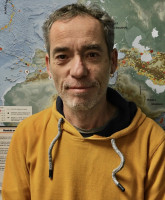Natural Catastrophes
Space & Planetery
Volcanic Eruption
Remote Sensing & Earth Monitoring
Geology
Post-Doctoral Fellowships
United Kingdom
2014.12.31
X-ray Science to revolutionise vocanic eruption monitoring
It uses a novel application of X-ray micro-computed tomography (XMT) to assess the magmatic conditions fuelling volcanic eruption. XMT methods generate data orders of magnitude faster than conventional petrologic analysis, and in 3 dimensions (Pankhurst et al. in press J. Petrology). This represents an opportunity to conduct time-series petrology while an eruption is occurring, link magmatic information to geophysical data in near-realtime, and provide real and specific inputs to ash dispersion models. Three steps are required in order to bring XMT volcanology to modern volcano monitoring: calibration, case study and engagement. This project combines
all three.
Mineral chemistry and populations of crystals with different compositions tell us much about a magmatic systems, and how it evolves with time. Since the X-ray attenuation of key magmatic minerals (such as olivine) varies with composition (e.g. Fo content), we can use the attenuation as a proxy for composition. Pilot data prove this is the case, and thus we can use XMT to gather chemical data in 3D. With calibration and creation of internal standards, this science can be used to cheaply generate baseline data from individual eruptions and entire volcanic histories as well as produce near-real-time data during a future eruption.
In order to demonstrate the technique's value in a real scenario in the future, the method will be conducted upon samples already collected throughout an eruption sequence. Thus petrology will be produced as a time series from a case study, ready to be compared with state-of-the-art monitoring methods (which are currently dominated by geophysical methods), from the same eruption.

Matthew
PANKHURST
Institution
University of Leeds
Country
United Kingdom
Nationality
Australian
Related articles
Extreme Weather Events
Space & Planetery
Floods & Tsunamis
Remote Sensing & Earth Monitoring
Post-Doctoral Fellowship
Italy
2023.09.01
Mitigating Tsunamis’ Threats and Destructive Impacts Through Enhanced Navigation Satellite System
Over the last century, 58 tsunamis occurred around the world. Accordingly, those events are rare, but each has a powerful... Read more

Michela
RAVANELLI
Sapienza University of Rome
Natural Catastrophes
Climate Change
Wildfires
Climate Adaptation & Resilience
Global Warming
AXA Chair
Greece
AXA Chair in Wildfires and Climate
The consequences of climate change have never been as substantial and visible in such a wide range of places around ... Read more

Apostolos
VOULGARAKIS
